Artis: Gustav Klimt
Gaya: Symbolism
tanggal: 1907
ukuran: 180 x 180 cm
museum: Österreichische Galerie Belvedere (Vienna, Austria)
Teknik: Oil
The Kiss (In German: Der Kuss) was painted by the Austrian Symbolist painter Gustav Klimtbetween 1907 and 1908, the highpoint of his "Golden Period", when he painted a number of works in a similar gilded style. A perfect square, the canvas depicts a couple embracing, their bodies entwined in elaborate robes decorated in a style influenced by both linear constructs of the contemporary Art Nouveau style and the organic forms of the earlier Arts and Crafts movement. The work is composed of oil paint with applied layers of gold leaf, an aspect that gives it its strikingly modern, yet evocative appearance. The painting is now in theÖsterreichische Galerie Belvedere museum in the Belvedere palace, Vienna, and is widely considered a masterpiece of the early modern period. It is a symbol of Vienna Jugendstil—Viennese Art Nouveau—and is considered Klimt's most popular work. It was painted soon after his three-part Vienna Ceiling series which created a scandal and were criticized as both 'pornography' and evidence of 'perverted excess'. The works had recast the artist as an enfant terrible for his anti-authoritarian and anti-popularist views on art. He wrote, "If you can not please everyone with your deeds and your art, please a few". By contrast, The Kiss was enthusiastically received, and immediately found a buyer. Klimt depicts the couple locked in intimacy, while the rest of the painting dissolves into shimmering, extravagant flat pattern. The patterning suggests the style of Art Nouveau and the organic forms of the Arts and Crafts movement. At the same time the background evokes the conflict between two- and three-dimensionality intrinsic to the work of Degas and other modernists. Paintings such as The Kiss were visual manifestations of fin-de-siecle spirit because they capture a decadence conveyed by opulent and sensuous images. The use of gold leaf recalls medieval "gold-ground" paintings and illuminated manuscripts, and earlier mosaics, and the spiral patterns in the clothes recallBronze Age art and the decorative tendrils seen in Western art since before classical times. The man's head ends very close to the top of the canvas, a departure from traditional Western canons that reflects the influence of Japanese prints, as does the very simplified composition. The two figures are situated at the edge of a patch of flowery meadow. The man wears a robe with black and white rectangles irregularly placed on gold leaf decorated with spirals. He wears a crown of vines while the woman is shown in a tight-fitting dress with flower-like round or oval motifs on a background of parallel wavy lines. Her hair is sprinkled with flowers and is worn in a fashionable upsweep; it forms a halo-like circle that highlights her face, and is continued under her chin by what seems to be a necklace of flowers. Similarly juxtaposed couples appear in both Klimt’s Beethoven Frieze and Stoclet Frieze. It is thought that Klimt and his companion Emilie Flöge modeled for the work, but there is no evidence or record to prove this. Others suggest the female was the model known as 'Red Hilda'; she bears strong resemblance to the model in his Woman with feather boa, Goldfishand Danaë. Klimt's use of gold was inspired by a trip he had made to Italy in 1903. When he visited Ravenna he saw the Byzantine mosaics in the Church of San Vitale. For Klimt the flatness of the mosaics and their lack of perspective and depth only enhanced their golden brilliance, and he started to make unprecedented use of gold and silver leaf in his own work.
Artis |
|
|---|---|
Download |
|
izin |
Gratis untuk penggunaan non komersial. Lihat di bawah. |
Gustav Klimt – Karya seni yang paling banyak dilihat
|
This image (or other media file) is in the public domain because its copyright has expired. However - you may not use this image for commercial purposes and you may not alter the image or remove the watermark. This applies to the United States, Canada, the European Union and those countries with a copyright term of life of the author plus 70 years.
|


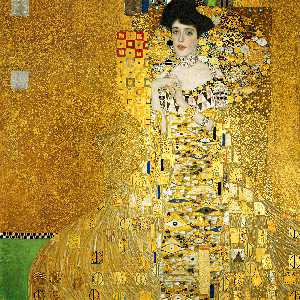
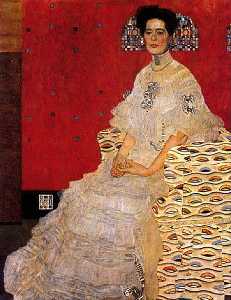
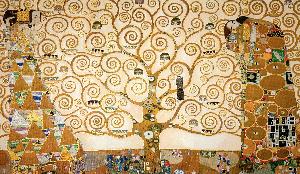
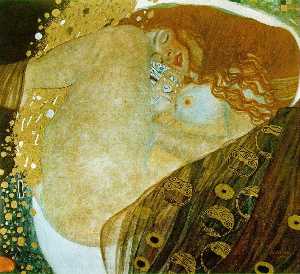
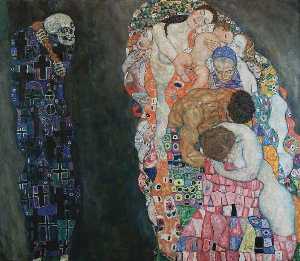
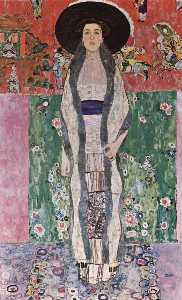
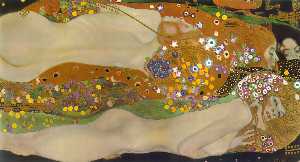
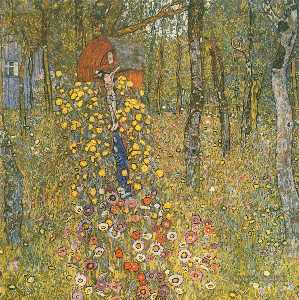
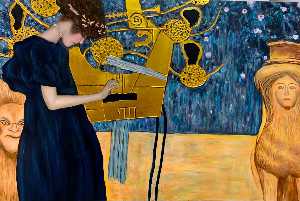
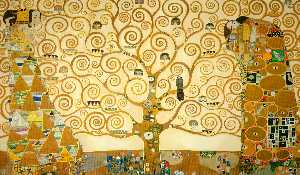
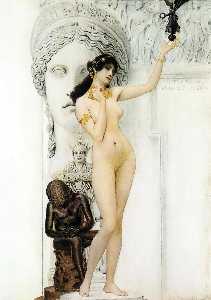

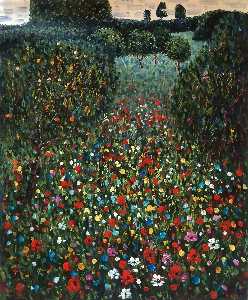
 Note that a few countries have copyright terms longer than 70 years: Mexico has 100 years, Colombia has 80 years, and Guatemala and Samoa have 75 years. This image may
not be in the public domain in these countries, which moreover do not implement the
Note that a few countries have copyright terms longer than 70 years: Mexico has 100 years, Colombia has 80 years, and Guatemala and Samoa have 75 years. This image may
not be in the public domain in these countries, which moreover do not implement the